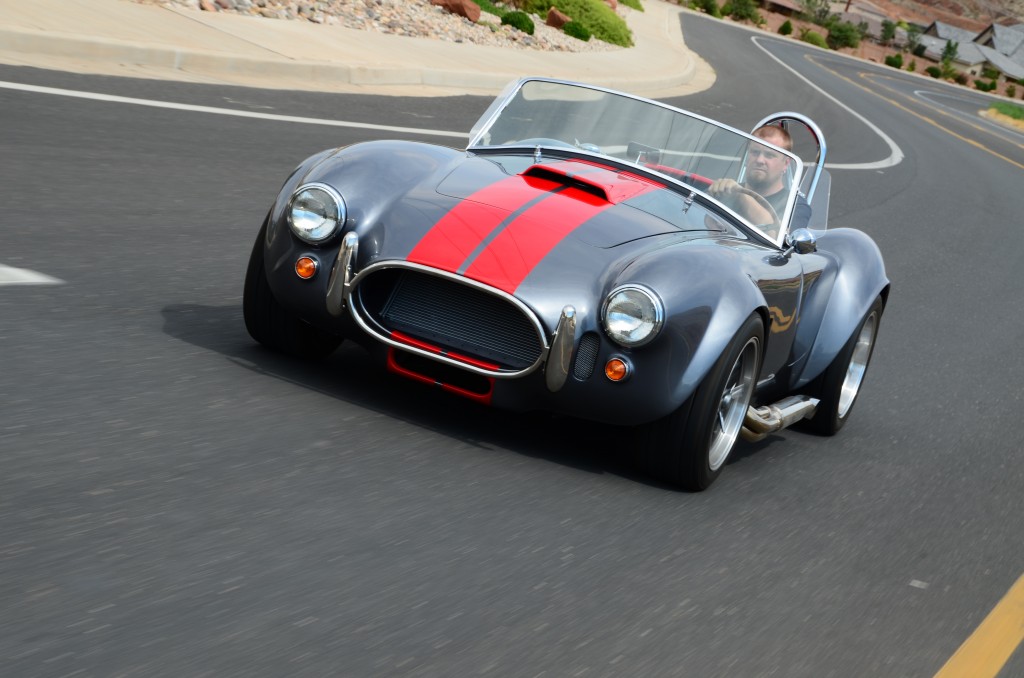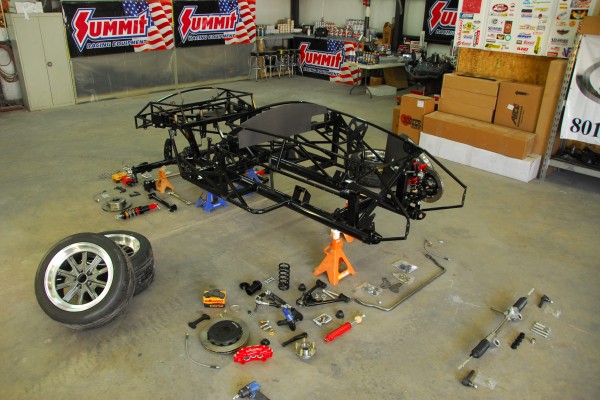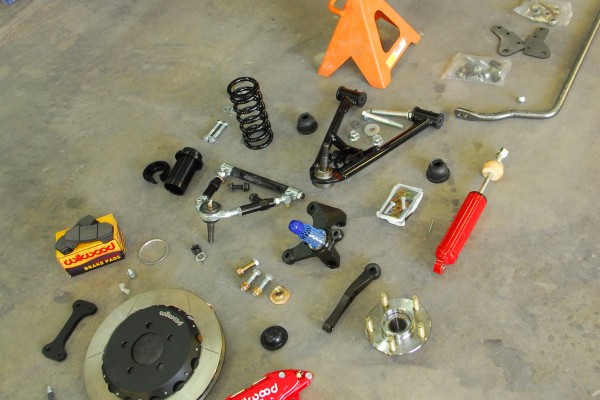
In this series of articles, we’ll be providing hands-on tech tips that show how simple and affordable it can be to build your very own modernized classic, a performer that features both the style of an original and the technology of the latest street machines. Stay tuned for upcoming installments, because once we’re all done, you’re in for one wild ride in Summit Racing’s Cobra roadster.
Chassis and Suspension, Part 1
Starting with the foundation, one quick look at the Factory Five Racing’s Mk4 frame tells you this ain’t your old man’s Cobra. FFR’s four-inch round-tube main rails have thicker walls (0.120 versus 0.095 inches) than the original, and a backbone section and extra perimeter tubing doubles its torsional rigidity. The dash/cowl hoop is welded to this structurally stronger frame via a cockpit surround cage, as are the hinges for the hood, doors and trunk. Safety enhancements include a taller, stronger rollbar, along with triangulated bracing, side-impact bars and crumple zones.
Add to that CNC-cut aluminum panels for lining the cockpit, trunk, and engine bay. These panels, made of 6061-T6 aluminum, are stiffer than traditional 4000-series aluminum, and backed by an integrated maxtrix of steel tubing for bracing and support.
For Part 1, in the accompanying photos and captions below, we’ll focus on installing the front suspension and steering rack, and then move to the rear-end in part two. Final chassis tuning and scaling will be covered at the end of this series, after we show details on the engine assembly and drivetrain install, along with body prep and finish details. Then we’ll head out for some driving fun!
And don’t forget–you can find an overview of all the parts used on the project in the Mk4 Anatomy, Part 1 and Mk4 Anatomy, Part 2 posts.
SOURCE: Factory Five Racing
PHOTOS: Steve Temple and Donny Clement
















[…] and will be going on the Summit Racing show and event trailer for the 2013-2014 show season. Click here to read part 1: Front Suspension and Steering Click here to read part 2: Rear Suspension __________________ Dave Lindsey "Worrying is […]
[…] replica kits and building their own vehicles. While this process can be an exciting challenge—like we discovered during our Factory Five Racing Mk4 build—it’s not for […]